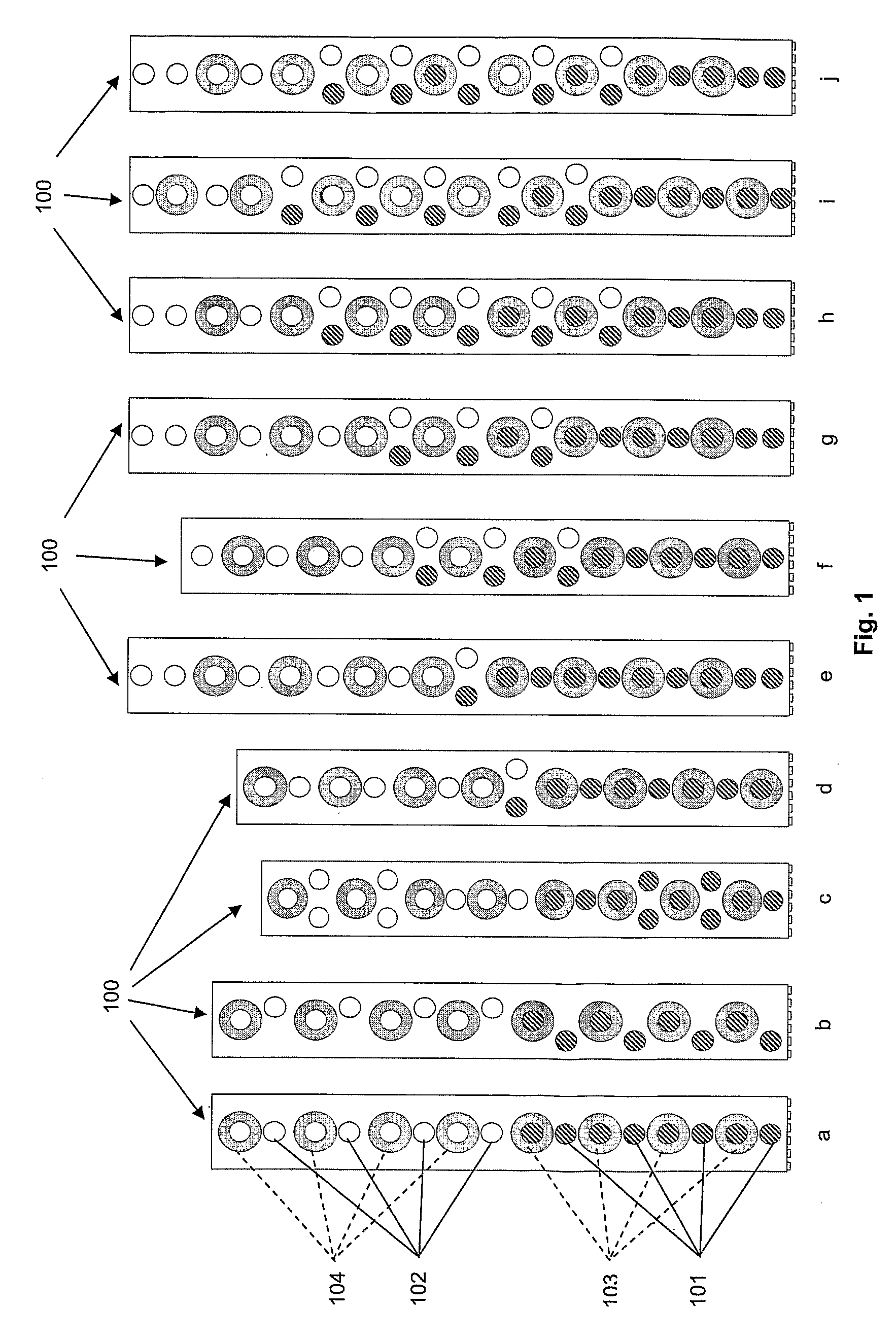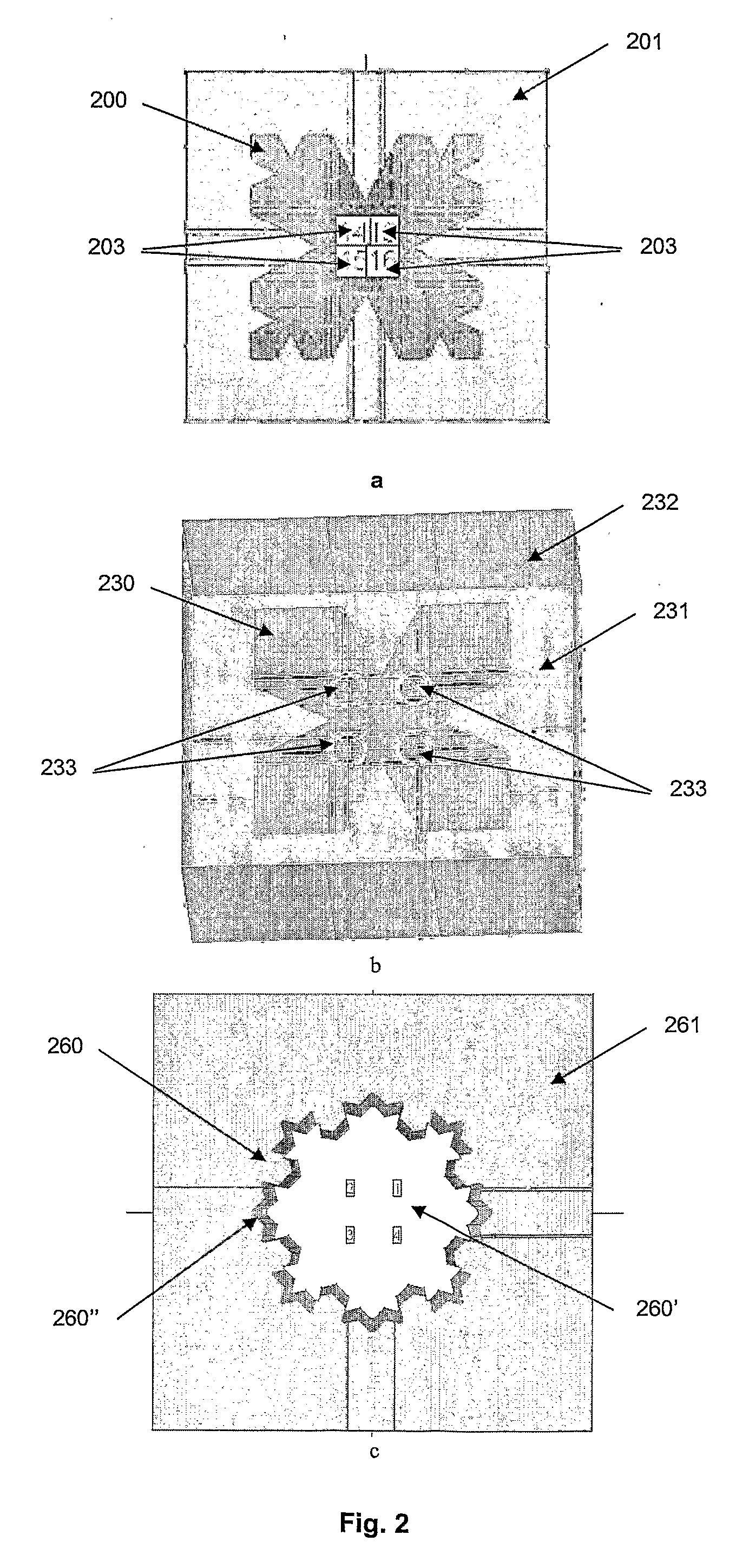Slim triple band antenna array for cellular base stations
a technology of cellular base stations and antenna arrays, applied in the direction of individually energised antenna arrays, polarised antenna unit combinations, antenna earthings, etc., can solve the problems of reducing the number of antenna arrays in the base station to just three, affecting the environmental and visual impact of the network, and reducing the width of the base station antenna
- Summary
- Abstract
- Description
- Claims
- Application Information
AI Technical Summary
Benefits of technology
Problems solved by technology
Method used
Image
Examples
Embodiment Construction
[0115]FIG. 1 presents, without any limiting purpose, several ways in which the radiating elements of a triple-band antenna array can be arranged according to the present invention. In order to further reduce the size of the triple-band antenna array (100), its radiating elements may be interlaced. In FIG. 1, the circles of different sizes and / or shading indicate the position in the array of the radiating elements belonging to the different sets (101, 102, 103, 104). The radiating elements are depicted as circles for illustration purposes only, and they do not necessarily represent their actual shape. In FIG. 1a, the combination of a first set of radiating elements (101) with the third set of radiating elements (103) provides a first frequency band of the antenna array (100). Then, the combination of a second set of radiating elements (102) with the fourth set of radiating elements (104) provides a second frequency band of the antenna array (100). Finally, the combination of the thir...
PUM
 Login to View More
Login to View More Abstract
Description
Claims
Application Information
 Login to View More
Login to View More - R&D
- Intellectual Property
- Life Sciences
- Materials
- Tech Scout
- Unparalleled Data Quality
- Higher Quality Content
- 60% Fewer Hallucinations
Browse by: Latest US Patents, China's latest patents, Technical Efficacy Thesaurus, Application Domain, Technology Topic, Popular Technical Reports.
© 2025 PatSnap. All rights reserved.Legal|Privacy policy|Modern Slavery Act Transparency Statement|Sitemap|About US| Contact US: help@patsnap.com



